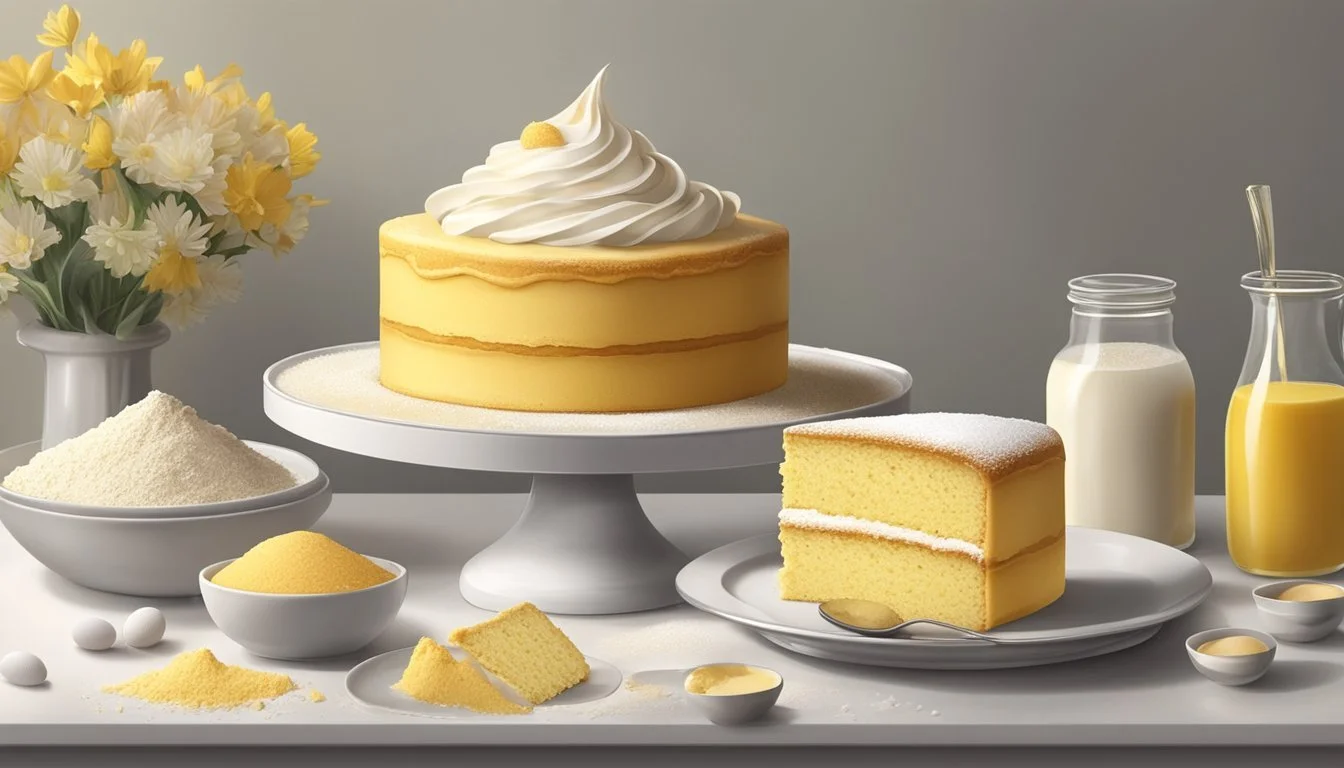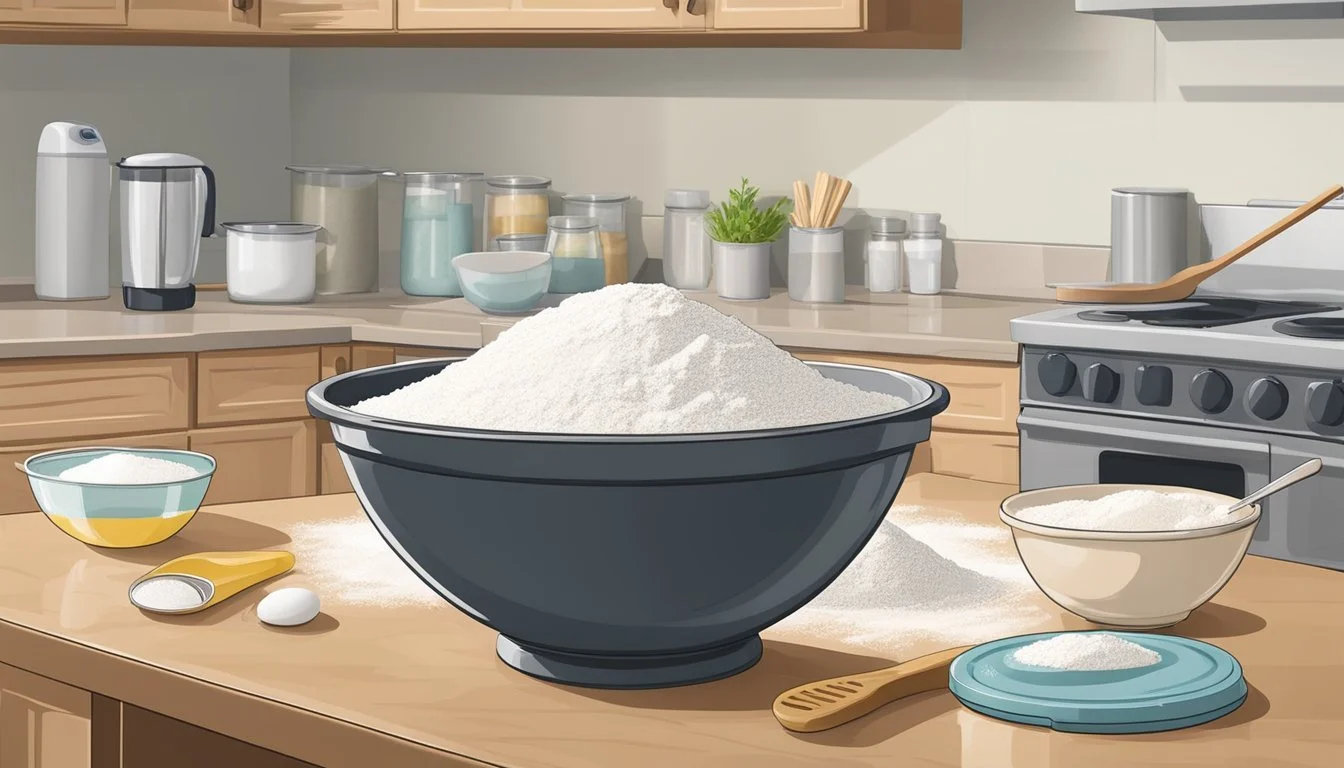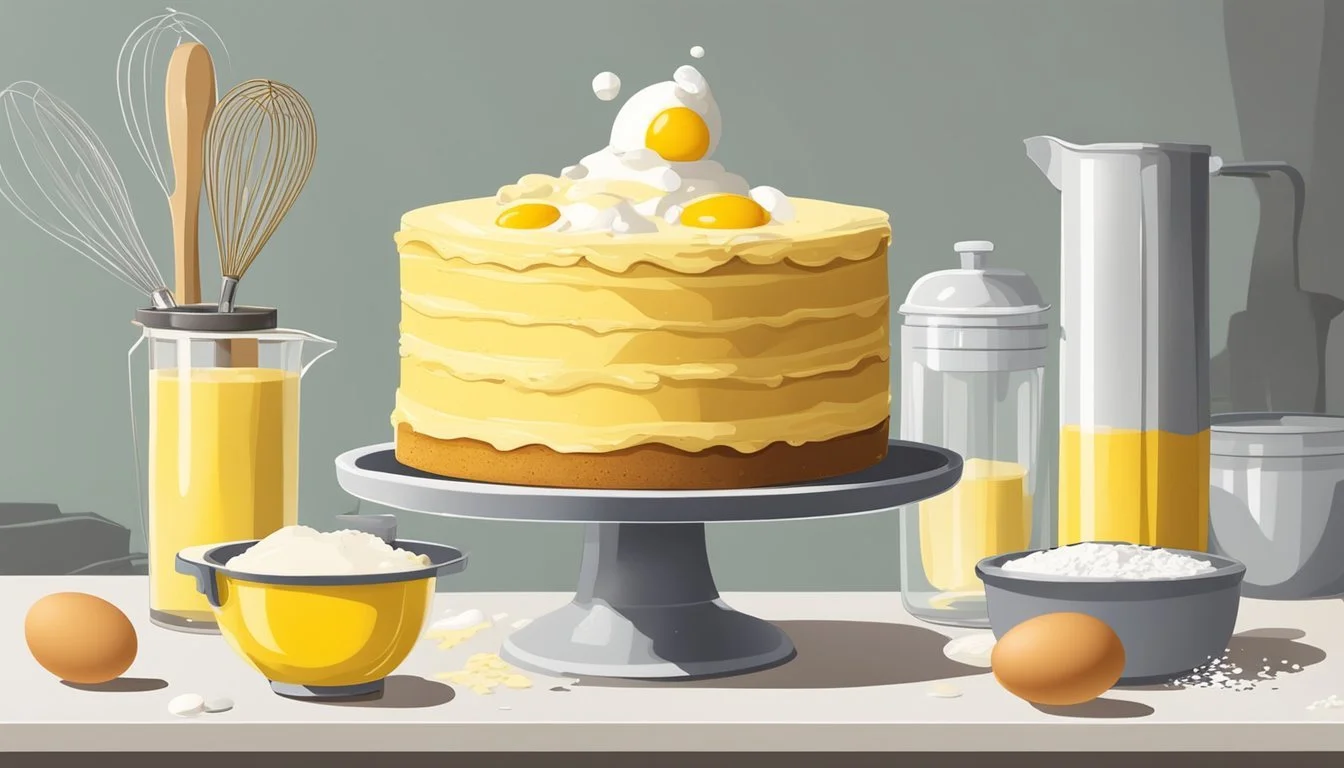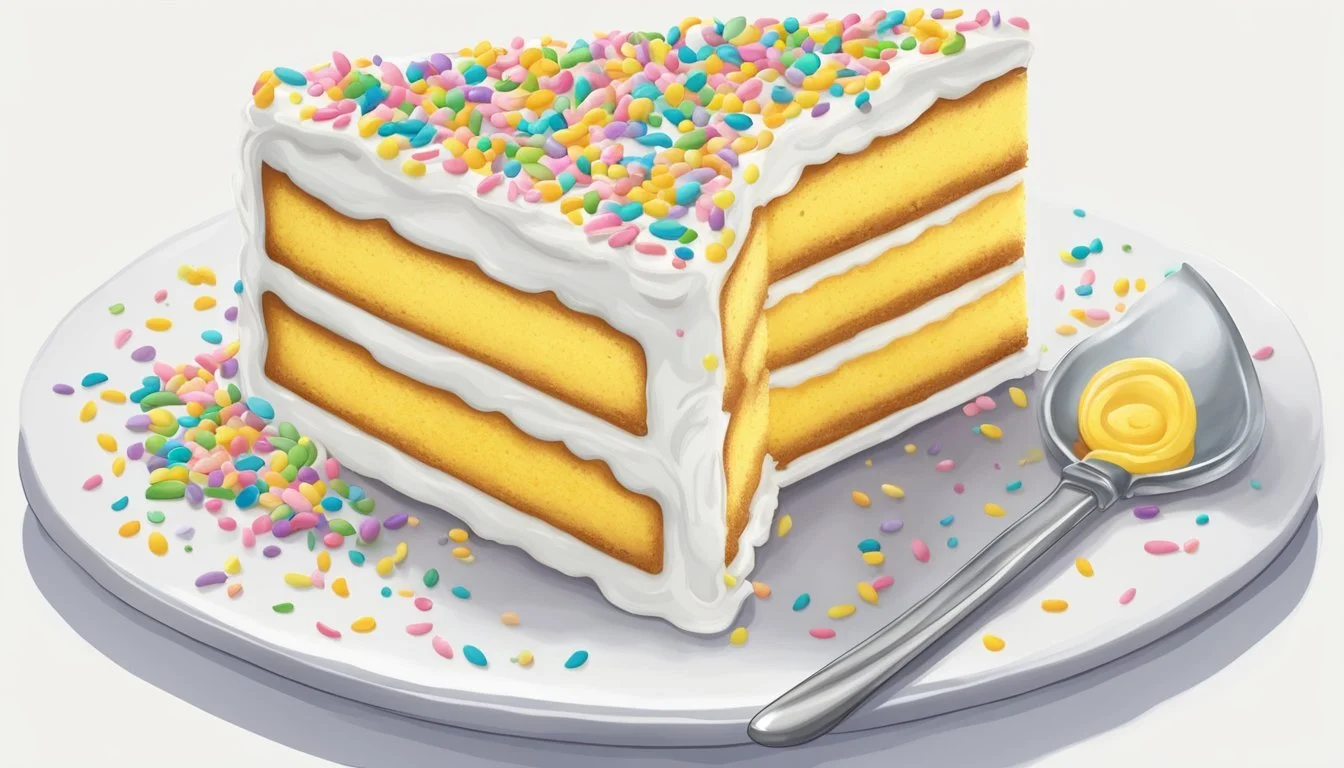How Do You Eat a Yellow Cake?
Simple Techniques for Enjoying This Classic Dessert
Eating a yellow cake is a delightful experience that is both straightforward and versatile. Yellow cake, known for its rich, buttery flavor and tender crumb, is a classic dessert that can be enjoyed in various ways. Whether it's served as a simple snack with a dusting of powdered sugar or layered with frosting for a celebratory event, the yellow cake holds a timeless appeal. Its moist texture and vanilla-infused taste make it a favorite among cake aficionados and casual dessert lovers alike.
When indulging in a slice of yellow cake, one may choose to enjoy it plain to appreciate the subtle notes of butter and vanilla. For a richer experience, one can pair it with a wide array of frostings such as chocolate, vanilla buttercream, or even fruit-flavored icings. The cake's simple yet satisfying flavor profile also pairs well with a scoop of ice cream or a drizzle of caramel or fruit sauce, enhancing the overall taste without overpowering it.
Presentation varies widely, with some opting for an elegant multi-tiered cake adorned with intricate decorations, while others prefer single-layered cakes (how long do cakes last?) with a rustic charm. Regardless of its presentation, the yellow cake remains a beloved dessert that embodies the comfort of home baking. It is a testament to the timeless pleasure of enjoying a well-made cake, offering a taste that is both familiar and deeply satisfying.
Ingredients Overview
When preparing a yellow cake from scratch, selecting the right ingredients is crucial for achieving the desired taste and texture. This section breaks down the essential components of a yellow cake recipe into key categories.
Key Ingredients
Flour: Typically, cake flour is preferred for its lower protein content, which results in a tender crumb. All-purpose flour is an alternative, but it may yield a denser cake.
Sugar: Granulated sugar is the most commonly used sweetener, contributing to the cake's sweetness and texture.
Eggs: Whole eggs and extra egg yolks enrich the cake's color and provide structure.
Fat: Unsalted butter is a popular choice for its flavor, while oil can be used for added moisture. Some recipes may combine both.
Leavening agents: Baking powder and, less frequently, baking soda or cream of tartar are added to help the cake rise.
Flavor Enhancers
Vanilla extract: Pure vanilla extract adds a classic flavor. Imitation vanilla can be used as a cost-effective substitute.
Salt: A pinch of salt balances the flavors and enhances the overall taste of the cake.
Milk: Whole milk is typically used for its richness, but alternatives like buttermilk, sour cream, or yogurt can be used to adjust the cake's moisture and tanginess.
Additional Elements
Frosting: Buttercream is a popular choice for yellow cake. Varieties include vanilla buttercream or chocolate buttercream for contrast.
Cornstarch: Sometimes combined with flour to closely replicate the texture provided by cake flour.
Cake strip: A dampened strip placed around the cake pan for even baking and a level cake.
Recipe Variations
Substitutions: For dietary needs, gluten-free flour blends, plant-based milk, and vegan butter can replace traditional ingredients.
High altitude adjustments: Slight modifications in leavening and baking temperature may be necessary to account for altitude changes.
Flavor additions: Incorporating citrus zest, spices, or extract variations can personalize the yellow cake to one's preference.
Preparing to Bake
In the process of creating yellow cake, meticulous preparation sets the foundation for a successful bake. This preparation involves specific techniques, ensuring the correct equipment is at hand, as well as preheating the oven and preparing the cake pans.
Preparation Techniques
One begins by sifting together the dry ingredients which often include cake flour, baking soda, and salt. Sifting not only helps to aerate the flour, but it also ensures an even distribution of all the leavening agents such as baking soda. For the recipe, precise measurements are crucial, and it's recommended that one employs a kitchen scale for accuracy. Ingredients like butter and eggs should be at room temperature to ensure an even, smooth mix.
Equipment and Tools
A successful yellow cake requires the proper equipment and tools. At the forefront are mixing bowls of various sizes and a reliable electric mixer, which can be a stand or hand mixer. To mix the batter to the right consistency, the mixer's paddle attachment is typically used. Additional tools like an offset spatula and a bench scraper can aid in transferring and smoothing batter. It is important that all equipment is clean and in good working condition before starting.
Preheating and Pan Prep
One must preheat the oven to the temperature specified in the recipe, commonly around 350°F (177°C). Meanwhile, the cake pans are prepared by lining with parchment paper, then greased to prevent sticking; some bakers also dust them lightly with flour. For even baking, cake strips can be utilized by soaking them in water and fastening them around the outside of the pan to insulate and regulate the temperature.
Making the Batter
To achieve a moist texture and buttery flavor in a yellow cake, the batter-making process is critical. The right mixing technique and consistency are essential for a tender cake.
Combining Ingredients
For a flavorful and tender result, it's important to start with the room temperature ingredients. Butter should be beaten with sugar until the mixture is light and fluffy. This is often done on high for around 3 to 6 minutes depending on the recipe. Next, egg yolks are added one at a time to the butter-sugar mixture, ensuring each is fully incorporated before adding the next.
Dry ingredients: Typically, a combination of cake flour, baking powder, and salt is sifted together.
Wet ingredients: These include the beaten butter-sugar mixture, egg yolks, and often vanilla extract.
The dry and wet ingredients are then combined in alternate additions, beginning and ending with the dry mix. This step-by-step approach prevents overmixing, which can toughen the cake.
Texture and Consistency
A well-made batter should have a uniform and smooth consistency. To maintain a moist and tender cake, it's crucial not to overmix once the flour is added. Overmixing can develop gluten further leading to a dense texture. The goal is a batter that is neither too thick nor too runny.
Key points for batter consistency:
Uniform and smooth
Free of lumps
Not overmixed
Final Steps Before Baking
Before the batter can be poured into cake pans, a few final steps ensure the cake will bake evenly.
Prepare cake pans: Grease and line the pans with parchment paper. This prevents sticking.
Preheat the oven: Ensure the oven is at the correct temperature, typically around 350°F (175°C).
Batter into pans: Distribute the batter evenly between the prepared pans if making a layered cake. For thicker cakes, you might need to double the recipe.
Bake the cake as directed by the recipe until a toothpick inserted in the center comes out clean, indicating it's done. After baking, let the cake rest in the pans for a few minutes before transferring it to a wire rack to cool completely.
Baking the Cake
Baking a yellow cake to perfection involves carefully monitoring the baking process and allowing the cake to cool properly before removing it from the pans. Adherence to these steps is critical to ensure the final cake has the desired texture and structural integrity.
Monitoring the Baking Process
When baking the cake, preheating the oven to the correct temperature is a crucial first step, typically around 350° F (175° C). It is important to distribute the batter evenly in the pans to promote consistent baking. The cake should bake until it is golden and a toothpick inserted into the center comes out clean, indicating that it is fully cooked. This usually takes about 25-30 minutes, depending on the recipe and oven.
To monitor the cake's progress, one should observe the color and rising. If the cake appears too dense or is not rising uniformly, the oven temperature may need to be adjusted or the batter may not have been properly mixed. Opening the oven door frequently can lead to loss of heat and may affect the cake's rise.
Cooling and Releasing from Pans
After baking, it's imperative that the cake is allowed to cool in the pans on a wire rack for the time specified in the recipe, often around 10-15 minutes. This permits the cake to settle and reduces the chance of it breaking upon removal. Once the cake is cool enough to handle but still warm, running a knife around the edge of the pan can help in loosening the cake.
The cake should be carefully turned onto a wire rack to cool completely to room temperature. Rushing this step may result in a crumbly or collapsed cake. Once cooled, the cake is ready to be frosted or stored. If one plans to freeze the cake, it should be wrapped in plastic wrap to keep it moist.
Decorating and Serving
When one has a freshly baked yellow cake, the delight is in the details. Decorating and serving are about adding visual appeal and taste enhancements, ensuring the cake is as pleasing to the eye as it is to the palate.
Frosting Techniques
Selecting the right frosting is crucial for a yellow cake. Buttercream is a classic choice; its fluffy texture and versatility make it ideal for smooth coverings or elaborate designs. For a rich twist, chocolate buttercream adds a decadent flavor. To apply frosting, one should use an offset spatula for a smooth layer or utilize piping bags and tips to create rosettes or borders. Starting with a crumb coat is essential, as it keeps loose crumbs from mixing into the outer layer of frosting.
Frosting Recipe: To make buttercream, one should cream together softened butter and powdered sugar, then add vanilla extract for flavor.
Techniques: Utilize tools like the offset spatula for large surfaces and piping bags for detailed work.
Finishing Touches
After frosting, the cake can be further decorated to celebrate an occasion, such as a birthday cake. Sprinkles, edible pearls, or themed toppers can add color and fun. For an elegant touch, fruits, or edible flowers complete the appearance. It's these details that elevate the presentation from a homemade creation to a special event centerpiece.
Decorations: Add sprinkles or other edible decor after frosting the cake.
Personal Touch: For special events, customize the toppings to match the theme or preferences.
Presentation
The way a cake is displayed can enhance its enjoyment. Placing the cake on a cake stand brings attention to the dessert and makes serving easier. A layer cake presents a stunning cross-section when cut, while a sheet cake offers simplicity and convenience. Always ensure the cake is completely cooled before decorating to prevent frosting from melting.
Display: A cake stand elevates the cake's position and visual importance.
Consideration: Choose an appropriate serving platter based on the style of the cake.
Storing and Preserving
To preserve a yellow cake, covering it with a cake dome or plastic wrap can prevent it from drying out. If made from scratch, a yellow cake can be refrigerated to retain freshness. For longer storage, cakes can be frozen; however, decoration should be minimal beforehand, as some elements may not withstand freezing well.
Short-Term: Covering the cake keeps it moist for a few days.
Long-Term: Undecorated cakes can be frozen to extend their freshness for weeks.
Additional Tips and Tricks
In striving for the best yellow cake, bakers often encounter a variety of challenges, from texture issues to flavor enhancements. This section dissects common hurdles and provides solutions to achieve a moist, flavorful cake, whether adapting a recipe to different sizes or experimenting with cake types.
Common Baking Problems
Bakers commonly face issues such as dryness or a dense texture. To prevent these:
Mixing: Avoid over-mixing the batter, as it can lead to a tough cake. Mix just until the ingredients are combined.
Baking: Ensure the oven is preheated and the cake is positioned in the center rack for even baking.
Enhancing Flavor and Texture
Flavor and texture make or break a cake. To enhance these characteristics:
Vanilla: Use high-quality vanilla extract to elevate the cake's taste.
Moisture: Incorporate buttermilk or sour cream for a moister crumb.
Creaming: Cream the butter and sugar thoroughly to incorporate air and achieve a light, fluffy texture.
Scaling the Recipe
When adjusting cake size or doubling the recipe, keep proportions in mind:
Ingredients: Maintain the same ingredient ratios, adjusting leavening agents as needed for larger batches.
Baking time: Larger cakes may require longer baking times; adjust accordingly and always test with a toothpick for doneness.
Alternative Cake Types
One yellow cake recipe can inspire numerous variations:
Cupcakes: Reduce the baking time as cupcakes cook faster than full-sized cakes.
Chocolate cake recipe: Add cocoa powder to the batter to transform the recipe into a chocolate delight.
Box mix enhancement: Mix in an extra egg or swap oil with butter to improve a box mix's texture and flavor.
By considering these tips, bakers can navigate common setbacks and refine the taste and presentation of their yellow cakes.







